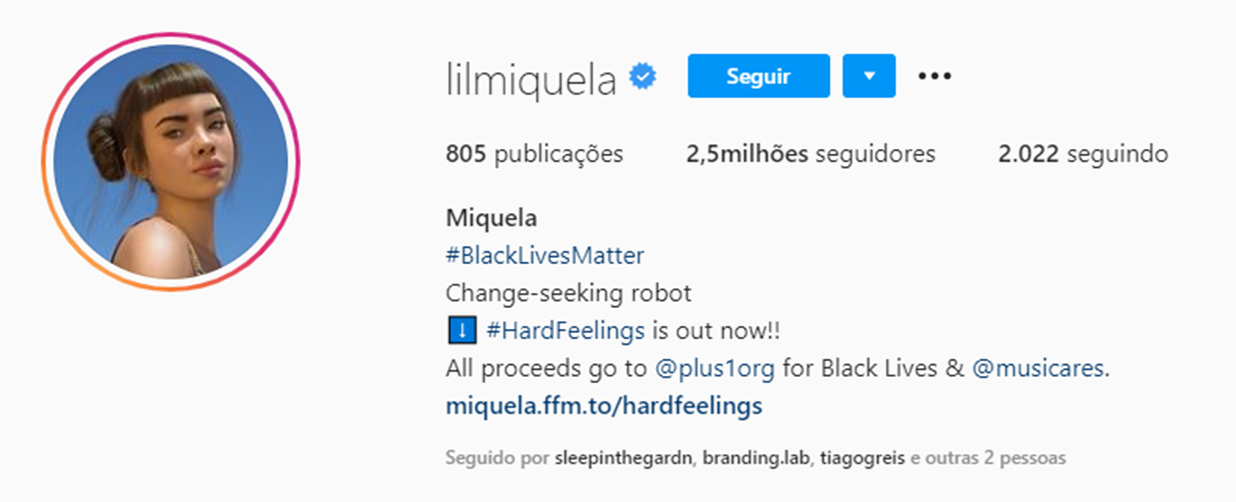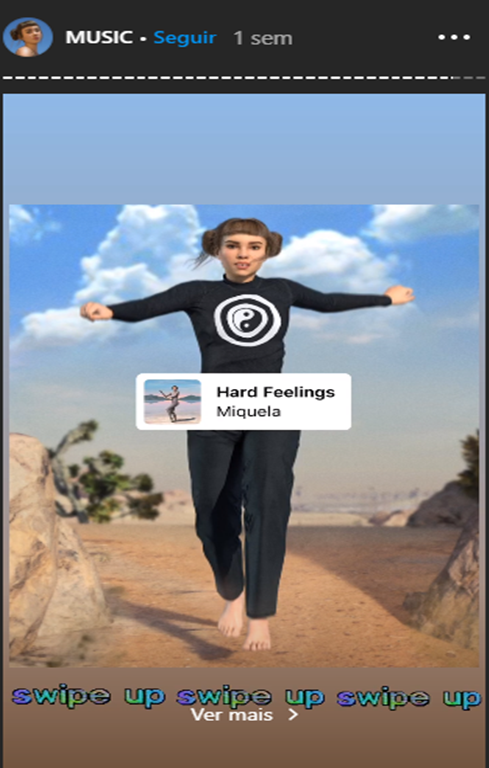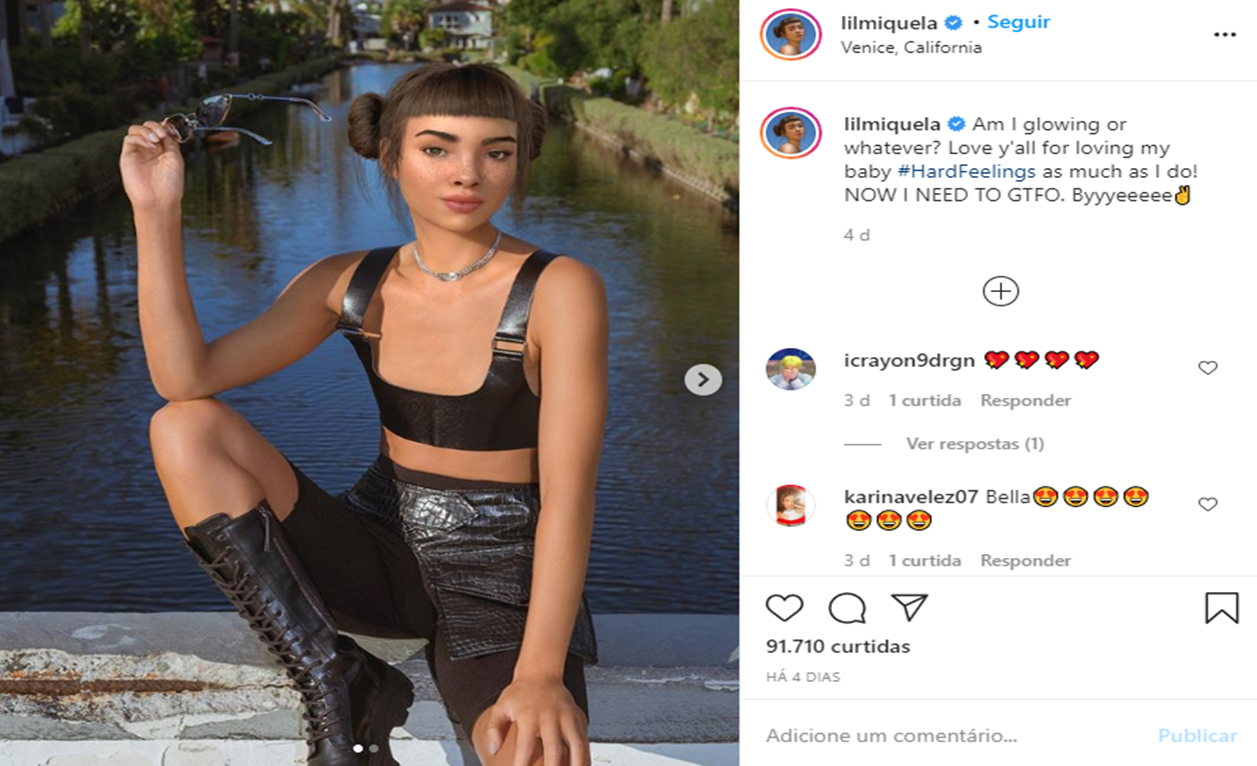Fearing to be left behind in the social media race, the vast majority of brands have ventured into social media space with little strategic thought or understanding of how to get the most out of their platforms. Many brands are using their pages as avenues to run short-term behaviour and reward activities which may harm brand value in the long term by teaching already loyal consumers to become sensitive to sales promotions (Kotler & Lee, 2008; Schultz & Block, 2012; Gambetti & Graffigna, 2010; Nelson-Field et al., 2012; Romaniuk, 2011).
After a decade in business, Instagram boasts one billion active worldwide accounts (Instagram, 2020). As of April 2020, the US has the highest number of Instagram accounts of any country with 120 million users (Clement, 2020). Brands big and small across the globe are using Instagram to drive their marketing and sales efforts. “When 90% of accounts follow at least one business on Instagram, it goes without saying that brands want in on the marketing action, too,” (Chen, 2020).
Arguably, Instagram is the most important platform to succeed on in the Western World in 2020.
According to research by Neilsen (2015) Instagram campaigns have achieved results two to three times above those possible on other online channels for the same set of brands and advertising goals.
Why is this possible?
Instagram is so different from other social media options because it allows firms to tell compelling brand stories in the style of a visual diary, carefully selected to represent a chosen identity. A visual ‘lifestyle’ mood board loaded with brand associations.
Therefore, brands can truly integrate with other Instagram users, marketing themselves in a non-confrontational manner and portraying authenticity by downplaying commercial motives.
“People today are discontented with this commercial existence and lack faith in marketing, with almost everything in their lives seeming to be contrived,” (Napoli, Dickinson, Beverland, & Farrelly, 2014). To combat this, consumers no longer search for an objective truth of reality, but instead hunt for cues of authenticity (Beverland & Farrelly, 2010; Beverland, Lindgreen, & Vink, 2008; Peñaloza, 2000).
Brands that come across as inauthentic, seem intrusive and irritating to consumers (Hall, 2014). Conversely, consumers have reported being more receptive to brand messages if they are ‘hidden’ in social media, rather than presented as traditional direct advertising (Palmer & Koenig-Lewis, 2009).
How Brands Can Portray Authenticity on Instagram
1. Use ‘authentic’ cues
These specific firm-level intangible cues have been found to denote authenticity (Napoli et al., 2014, Gundlach & Neville, 2012; Sandlin & Pena, 2014; Harris & Deacon, 2011; Illicic & Webster, 2014):
- A commitment to quality
- Heritage
- Relationship to place
- Sincerity
- Nostalgia
- Craftsmanship
- Consistency of design
Successful brands weave these cues into their Instagram advertising to build authenticity and credibility with their followers.
2. Personify the brand
Consumers use a firm’s Instagram account to build a picture of their favourite brand as if that brand was a human.
Instagram users I interviewed for my thesis about this phenomena could specifically describe the person they imagined a brand to be based on brand associations visually depicted in Instagram photos. For example:
- “The skinny as, fashionable girl, who is kind of sulky, quite pale, slightly edgy, a bit too cool.”
- “Dark moody type… She doesn’t care what other people think. Simple, clean-cut, no frilly stuff, and it’s not girly whatsoever… Just strong and independent, gives no shit.”
- “This person’s [the brand as a person] concerned about their image. So, they dress nicely and have pretty nice branded clothes… Creative. Thinks a little bit differently.”
Portraying brands as ‘people’ on Instagram is tied to understanding how consumers come to see brands as authentic members of their Instagram communities. Social media space is personal and social and therefore corporate messages must be personable and relatable to be accepted by consumers (Chow & Shi, 2015; Simmons, 2007; Berry 2000).
I un-follow something as soon as it’s like ‘Shredzergram get the 60-day challenge for this much money’ because I’m like that’s no longer an inspiring pic with someone with nice abs, it’s now like, it’s a sale.
Human warmth and social presence are key factors in establishing relationships between brands and consumers (Chow & Shi, 215). Building and communicating a strongly humanized brand allows a firm to win consumer trust, generate a perception of credibility, and tell a compelling story (Berry, 2000).
Ruby and Superette [two brands] I stopped following. I think they posted too often and too advertisement-like. Whereas I like seeing people that look more natural, like it was almost someone’s page. When it looks too advertised it’s just boring… you want the brand to be more personable.
3. Telling a lifestyle story
Authentic brand perceptions are built via the creation of ‘brand lifestyle stories’. A lifestyle story was found to be crafted via a series of images depicting branded products in use in real-world situations.
I like that because… they’re not selling their product, but they’re selling like a lifestyle that comes with the product.
And:
It’s the lifestyle that they’re selling so it’s what I like to see.
Interviewees expected brands on Instagram to depict their products authentically in use, rather than hanging up in the shop. This allowed brands to downplay their commercial motives, and fit in more effectively with their consumers on Instagram.
The story going behind the photos can almost be just as important…as… if they’ve thrown up this new watch because they’ve got it into stock, or if it’s a sale on or something I’m just not that interested. Whereas if a guy had been out climbing the mountain with it and had been bashing through the snow for eight hours and then took a photo that was all covered in snow and it was like pouring down then that’s cool.
This style of marketing on Instagram means creating staged ‘brand autobiographical memories’ to tell a lifestyle story.
Sharing personal autobiographical memories is known to help people bond and make interactions more authentic and meaningful (Bluck, 2003). Visual autobiographical memories are snapshots that link a person to a memory or experience (Bluck, 2003). Authentic brands adapted to this method of digital self-identity presentation by staging ‘branded autobiographical memories’, which allow these brands to build authentic identities in the eyes of their consumers.
For example:
Huckberry does a lot of events… they were trying to get a whole lot of people together in Yosemite national park, in California and they were having photo-shoots. They were getting people out there as well, and so then it was like almost documenting that trip. And they had photos of guys in the hammocks that they sell, with sunsets behind them and the big cliff-faces in Yosemite, and that had all been going on while they were having this event so that when there is a story to tell I like it.
Maintaining continuity of elements over time allows a firm to align their brand with a specific lifestyle theme; (for example, wilderness exploring or surfing) that the consumer can relate to. Congruency between the lifestyle portrayed by the brand on Instagram and the consumer’s values drives genuine consumer connections. Consumers choose brand companions that re-affirm their ideas of themselves (Kumar, Luthra & Datta 2006).
Say, it was a surfing brand, I’m taking surfing pictures so I have a common interest which is surfing or the outdoors or something kind of like the drawcard. So the reason that I follow them [brands] is that they’re posting… they post material that’s similar to myself.
Aspirational lifestyle escapism also has a role here. It fills a hedonic need of consumers: to escape their own perceptively mundane realities, and imagine themselves as part of a new and exciting digital world. The use of artistic visuals allows consumers to achieve the hedonic escapism they desire by allowing firms to effectively downplay their commercial motives and present a virtual ‘brand-world’ that consumers can escape into. For example:
I think she’s in France which is just the ultimate chic to me. Walking through a European town, kind of old school, black and white, she looks chic. She’s not actually even wearing the Lonely Hearts clothing so it’s not really an advert, but I’d love to be in Paris, sitting at a café. She’s sitting by herself, I’m quite a wanderer by myself. I like wandering. It looks kind of like she is listening to people’s conversations. She’s really chic, and I’d look at that in an art book.
The reference above to Instagram images not being perceived as adverts, but more as pictures that could be found in an art book is at the crux of why Instagram is so effective for perceptively authentic brand building.
Artistic visual media on Instagram allows firms to downplay their commercial motives which encourages consumers to hedonically escape into a brand’s lifestyle story. As another example:
This picture here is a picture of someone, it looks like an old picture, wearing a Belstaff jacket that you can’t really see, and they’re riding a motorbike away from you so the jacket is not the focal point of the picture, it’s the motorcyclist… I like how it’s subtle. It’s not really trying to sell you anything. It’s displaying how the products can be used and that’s how I’d like to use the product so that’s why I like it. I would like one of the jackets and I would like a motorbike like that.
4. Using consumer-generated content
Featuring consumer-generated content allows brands to use their consumers as endorsers, which functions to further foster perceptions of authenticity due to endorser relatability (Kumar et al., 2006). This reflects the power of the typical person endorser which has long been acknowledged (McCracken, 1989), but also the power of directly bringing the consumer into the brand story (Gensler et al., 2013). For example:
I think it’s cool. It shows a connection between the brand and the consumer. It’s basically all trying to make it seem like it’s not a big corporate, and it shows how other consumers are using the products. Also the worn look… People like it. I’d quite like to see how a pair of shoes will look a couple of years down the line and what they can be used for.
And:
Lonely Girls Project is dedicated to all the Lonely girls that buy the Lonely Lingerie, and I think it comes through hashtags, so if you put a hashtag up under your post they can feature you under their page. And this is much more fun because you can see real people wearing it. Because you see the models wearing it and you think, really, does it sit that nicely? Then you see real people wearing it and you see people of different shapes and sizes who love their Lonely, and, you know, and it’s much more real… Rather than just a thing that seems unobtainable because you just see celebrities and models doing it.
A possible consumer-generated content feature on Instagram also provides some consumers with a reason to follow brands: the potential for wider exposure for their content, and fifteen minutes of fame. Multiple interviewees followed brands in the hope of having their photos featured.
Summary: How to get the most from Instagram for your brand
- Market brands on Instagram as if the brand was a person, to allow consumers to befriend, connect with, and follow the firm as they would one of their best friends.
- Use Instagram to tell lifestyle stories by constructing content based on staged autobiographical memories.
- Maintain a continuity of elements over time to allow a firm to align their brand with a specific lifestyle theme.
- Present content that is artistic and fits with the culture of Instagram as a community.
- Recognise the value of using consumer-generated content to both make their brand relatable to consumers, and as a reason for consumers to tag the brand in the content they want featured, generating electronic word of mouth.










